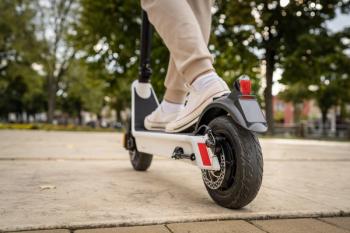
- August 2024
- Volume 40
- Issue 7
Boy presents with fatigue, minimal responsivity, and diffuse muscle weakness
An 11-year-old boy with a history of asthma and allergic rhinitis presented to the emergency department (ED) with worsening fatigue, minimal responsivity to external stimuli, and diffuse muscle weakness for 2 months.
The case:
An 11-year-old boy with a history of asthma and allergic rhinitis presented to the emergency department (ED) with worsening fatigue, minimal responsivity to external stimuli, and diffuse muscle weakness for 2 months. He had been admitted the previous month at another hospital for weakness, weight loss, and odynophagia, where he was found to have an elevated creatinine kinase (CK) level of 800 U/L and was diagnosed with viral myositis. Results from an additional workup included the following: hemoglobin A1c level, 5.1%; COVID-19 polymerase chain reaction test, negative; COVID-19 IgG, negative; and rapid strep test, negative. He had an unremarkable esophagogastroduodenoscopy and colonoscopy, and an electroencephalogram (EEG) that did not demonstrate epileptiform seizures. He received IV fluids for dehydration and myositis. After discharge, his symptoms continued to progress with worsening muscle weakness, refusal to eat, and mutism.
In our ED, he was nonverbal, fatigued but awake, and following commands for the neurologic exam. His vitals were within normal limits, with blood pressure at 98/62, a pulse rate of 84 beats per minute, a respiratory rate 18, saturation of peripheral oxygen at 98% on room air, and a temperature of 37.5 ºC. His weight was at the 0.5 percentile, height at the second percentile, and body mass index (BMI) at the 3.5 percentile. His cranial nerves were grossly within normal limits, although it was noted that he had facial nerve weakness that was worse on the right than the left side and 1/5 shoulder shrug strength bilaterally. His muscle bulk and tone were appropriate without resistance to passive movement or repetitive movements, and he had 3/5 strength in all extremities. The sensation of light touch was intact. Two-plus brachioradialis, suprapatellar, and Achilles’ reflex were noted bilaterally. Initial labs included a complete blood count (CBC), a comprehensive metabolic panel and respiratory pathogen panel, erythrocyte sedimentation rate, C-reactive protein level, CK level, lactate level, and an enterovirus test; only the CK level was found to be abnormal (below reference range at 34 U/L).
Early on in the patient’s admission, consults from the rheumatology, infectious disease, and neurology departments were obtained given the systemic and vague nature of his symptomatology. Subsequently, the gastroenterology department was consulted given reports of reflux/regurgitation. The patient’s rheumatologic workup included tests for the following: antinuclear antibody (Ab), antineutrophil cytoplasmic Ab, anticentromere B Ab, creatine phosphokinase, Smith Ab, ribonucleoprotein Ab, double stranded DNA, aldolase, anti-Jo-1 Ab, anti-Mi-2 Ab, ribosomal-P protein, C3/C4, and serum protein electrophoresis. His metabolic workup included ammonia, lead, and zinc levels; a heavy metal panel and celiac panel; thyroid-stimulating hormone, triiodothyronine, and thyroxine levels; thyroid peroxidase (TPO) Ab level; and a myositis panel. The infectious disease workup included a respiratory pathogen panel, and testing for Epstein-Barr virus viral capsid antigenIgM/EBNA-1 IgG, Lyme disease Ab, mononucleosis Ab, Borrelia burgdorferi Ab, herpes simplex virus type 1 and 2, human T-lymphotropic virus type 1 and 2 Ab, echovirus, and West Nile virus. Lastly, his neurologic workup included neuronal and paraneoplastic autoantibodies levels (aquaporin-4 receptor, acetylcholine receptor modulating/blocking/binding, LRP4, myelin oligodendrocyte glycoprotein), muscle-specific kinase level, a lumbar puncture (LP), a cerebral spinal fluid (CSF) autoimmune encephalopathy panel, electromyography/nerve conduction studies, an EEG, somatosensory evoked potentials test, and an MRI of the brain and spine (Figure 1).
Given the imaging findings, the neurosurgery department was consulted; they stated that the epidural fluid was likely related to prior LP and not amenable to drainage. Per recommendations from the rheumatology department, IV immunoglobulin (IVIG) 2 g/kg over 3 days and thiamine repletion 10 mg daily for 3 days were trialed without clinical improvement. Pantoprazole and famotidine were initiated given the patient’s worsening reflux, and feeds were provided by nasogastric tube given his inability to maintain adequate nutrition via oral feeds.
Up until that point in the admission, the patient’s physical exam remained significant for diffuse muscle weakness and generalized fatigue. Due to a largely negative workup, the psychiatry department was consulted on hospital admission day 11 to evaluate for conversion disorder vs primary mood disorder. Upon further evaluation, they calculated his score on the Bush-Francis Catatonia Rating Scale to be 10—consistent with catatonia—and recommended a benzodiazepine challenge. After this, the patient had markedly increased strength globally, volitional movements, and verbosity/responsivity. He was discharged with instructions to take lorazepam 2 mg every 6 hours.
Discussion:
Catatonia is an often-underdiagnosed neuropsychiatric syndrome that can occur secondary to medical or psychiatric illnesses. It presents a unique diagnostic challenge due to its rarity, varied symptomatology, and comorbid or underlying conditions, particularly in pediatric patients. Diagnostic criteria per the Diagnostic and Statistical Manual of Mental Disorders, Fifth Edition require the presence of at least 3 stereotypical symptoms as found in Table 1.1
Differential diagnoses:
Notably, symptoms may fluctuate over time and mimic those found in other systemic conditions, with differential diagnoses listed in Table 2. Expansive diagnostic workup is required, including lab work and imaging.2 In our patient’s case, his CBC, inflammatory markers, and CSF analysis were all within normal limits, and his cultures were persistently negative, rendering infectious and autoimmune causes less likely especially in light of his unresponsiveness to a trial of IVIG. Even though he had low thiamine levels, genetic and metabolic etiologies were deemed unlikely given his negative chemistries and continued symptoms with thiamine repletion. Finally, the central and peripheral neurologic workups were unremarkable with the exception of epidural fluid collection, which the neurosurgery department thought would not have caused his clinical presentation.
Diagnosis and management:
The gold standard for diagnosis is a benzodiazepine challenge, wherein 1 to 2 mg IV lorazepam is given and a reduction of symptoms of at least 50% within 5 minutes is considered a positive response. First-line treatment is scheduled lorazepam administration every 6 to 8 hours with a duration of therapy dependent on patient response; notably, 1 case report documents a patient with a presumptive diagnosis of depression who did not respond to an initial benzodiazepine challenge but demonstrated significant improvement in symptoms when started on higher lorazepam and fluoxetine dosages.3 For nonresponders (patients who do not respond to benzodiazepines or who do not have a clinically/functionally adequate response after a week of benzodiazepine administration), electroconvulsive therapy should be considered.
Failure to respond to initial treatment may progress to a lethal metabolic condition known as malignant catatonia, whose pathophysiology is not well defined but which predisposes patients to rhabdomyolysis, kidney failure, and heart failure.4,5 Finally, supportive therapy should be provided to address functional deficits, including physical therapy, occupational therapy, and specialty referrals as appropriate. In general, the prognosis for catatonia is thought to be favorable depending on the underlying instigating condition. However, it should be noted that the duration of catatonia may be prolonged (up to years), recurrent catatonia has been reported previously, and the prognosis in pediatric catatonia has not been rigorously investigated.
Patient course:
Although our patient exhibited a successful response to the benzodiazepine challenge and had improved clinical status upon discharge, he required up titration of scheduled lorazepam, which was eventually discontinued 6 months after initiation. He has continued outpatient follow-up with the clinical nutrition, gastroenterology, physical therapy, and psychiatry departments. In the time since his hospitalization, some residual functional deficiencies remain, and he has been evaluated by the endocrinology department for short stature and by the pulmonology department for subjective difficulty in breathing. He currently trends along the 30th percentile in weight, the 1st percentile in height, and the 85th percentile in BMI.
References:
1. Diagnostic and Statistical Manual of Mental Disorders, Fifth Edition. American Psychiatric Association; 2013. Accessed June 1, 2024. https://doi.org/10.1176/appi.books.9780890425596
2. Sorg EM, Chaney-Catchpole M, Hazen EP. Pediatric catatonia: a case series–based review of presentation, evaluation, and management. Psychosomatics. 2018;59(6):531-538. doi:10.1016/j.psym.2018.05.012
3. Ridgeway L, Okoye A, McClelland I, Dhossche D, Kutay D, Loureiro M. Case report: a case of pediatric catatonia: role of the lorazepam challenge test. Front Psychiatry. 2021;12:637886. doi:10.3389/fpsyt.2021.637886
4. Sienaert P, Dhossche DM, Vancampfort D, De Hert M, Gazdag G. A clinical review of the treatment of catatonia. Front Psychiatry. 2014;5:181. doi:10.3389/fpsyt.2014.00181
5. Wilcox JA, Duffy PR. The syndrome of catatonia. Behav Sci (Basel). 2015;5(4):576-588. doi:103390/bs5040576
Articles in this issue
about 1 year ago
Exploring the treatment landscape for pediatric vitiligoabout 1 year ago
AM dressings are effective for newborn aplasia cutis congenitaabout 1 year ago
Exploring kindergarten readiness in children born pretermabout 1 year ago
Navigating school-based mental health servicesabout 1 year ago
A preview of the August issue of Contemporary Pediatricsover 1 year ago
Navigating medicine in the school settingNewsletter
Access practical, evidence-based guidance to support better care for our youngest patients. Join our email list for the latest clinical updates.














